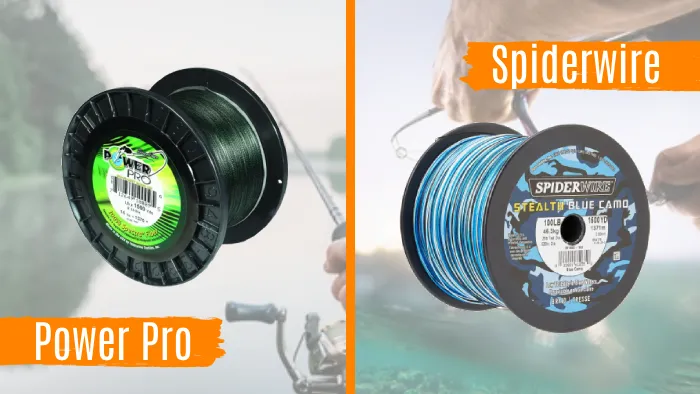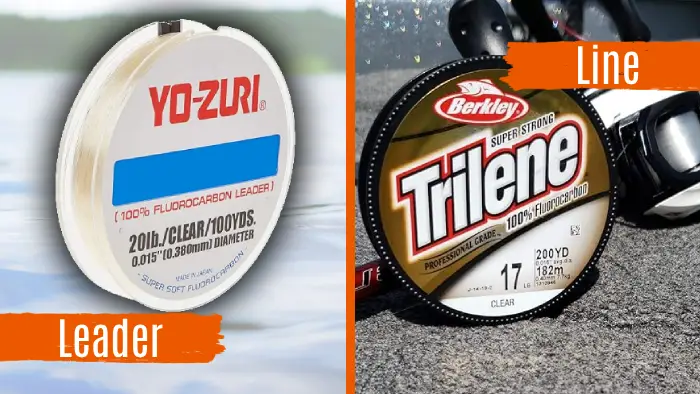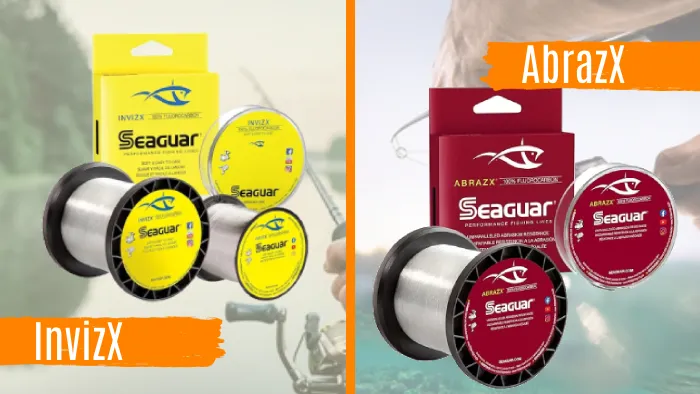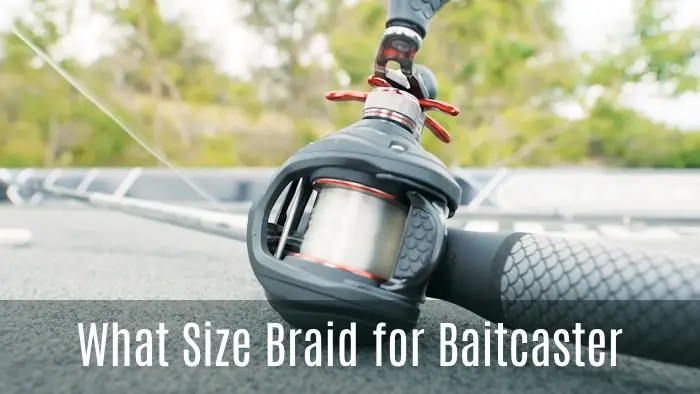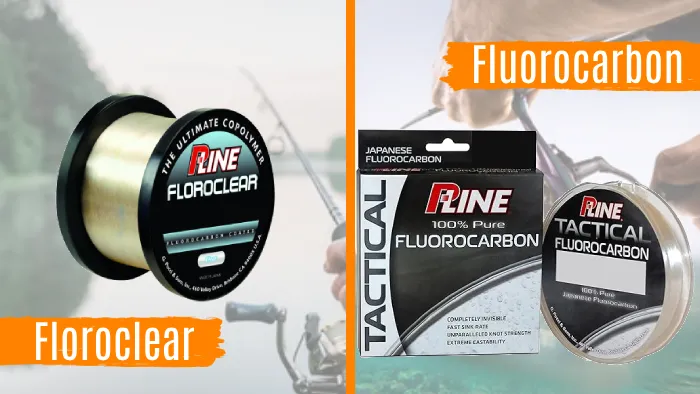Power Pro vs Spiderwire Fishing Lines: 6 Differences
Power Pro and Spiderwire are two renowned names in the fishing line arena, each boasting unique features and capabilities.
As an angler, you know that choosing the right fishing line can make all the difference in your fishing experience, and Power Pro and Spiderwire fishing lines differ in some crucial ways.
One notable difference between Power Pro and Spiderwire fishing lines is their casting distance. PowerPro impresses with reliable long-distance casting, reaching 122 feet for lightweights and 200 feet for heavyweights.
In contrast, Spiderwire Ultracast Invisi-Braid gains a slight edge in casting distance, averaging 126 feet for lightweights and 203 feet for heavyweights, outperforming PowerPro.
We will thoroughly discuss the differences between Power Pro and Spiderwire fishing lines to help you choose the best fishing line for your next adventure.
6 Differences Between Power Pro and Spiderwire Fishing Lines
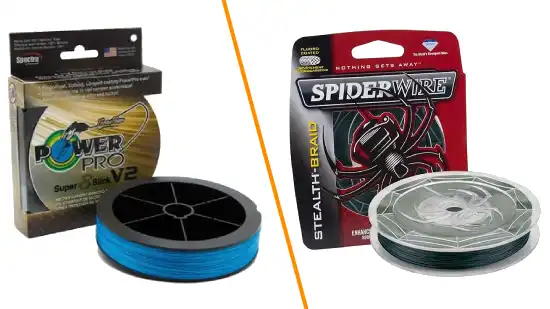
When comparing Power Pro and Spiderwire fishing lines, several key differences exist.
- Casting distance
- Abrasion resistance
- Long-term durability
- Coating and break-in period
- Color options
- Price considerations
Check out each difference between Power Pro and Spiderwire fishing lines in detail.
1. Casting Distance
To compare the casting distance of Power Pro and Spiderwire fishing lines, consider their respective performance in lightweight and heavyweight tests.
PowerPro exhibited a strong performance in casting distance, reaching an average of 122 feet in lightweight tests and 200 feet in heavyweight tests. This showcases its reliable long-distance casting capabilities while fly fishing in Nevada or anywhere else you may prefer to fish.
Meanwhile, Spiderwire Ultracast Invisi-Braid showed a slight advantage in casting distance. It achieved an average of 126 feet in lightweight tests and 203 feet in heavyweight tests, surpassing PowerPro by a minimal margin.
Although the difference in casting distance between the two lines is relatively small, it may be a factor to consider for anglers who prioritize maximizing their casting range.
2. Abrasion Resistance
Both Power Pro and Spiderwire fishing lines exhibit differences in their abrasion resistance.
In tests, PowerPro demonstrated solid abrasion resistance, breaking slightly later than Spiderwire. Although the difference in resistance was minimal, it suggests that PowerPro may be more effective in withstanding fishing near structures.
Conversely, Spiderwire Ultracast Invisi-Braid showed slightly lower abrasion resistance, breaking a bit earlier than PowerPro.
3. Long-Term Durability
When considering the long-term durability of Power Pro and Spiderwire fishing lines, evaluating their resistance to abrasion is essential.
Power Pro fishing lines have shown superior durability over time, with their resistance to abrasion being a key factor. The Power Pro line maintains its strength and integrity even after prolonged use, making it a reliable choice for long-term fishing.
Conversely, Spiderwire fishing lines have been observed to experience a decrease in casting distance over time, which could be attributed to the loss of their waxy exterior. This loss of performance raises concerns about the long-term durability of Spiderwire lines.
Therefore, if long-term durability is a priority, Power Pro fishing lines may be the better option due to their ability to withstand abrasion and maintain their casting performance over time.
4. Coating and Break-in Period
Regarding coating, Power Pro fishing lines have been known to flake off until the line is properly broken in initially. This flaking issue is specific to Power Pro and isn’t seen in Spiderwire Stealth.
On the other hand, Spiderwire Stealth boasts a smoother performance right out of the box, thanks to its coating. This means that Spiderwire fishing lines don’t require a break-in period as Power Pro lines do.
The absence of flaking and the immediate usability of Spiderwire Stealth make it a convenient choice for anglers who prefer a hassle-free fishing experience.
5. Color Options
The color options of Power Pro and Spiderwire fishing lines offer distinct advantages and versatility to anglers.
Power Pro provides a range of colors including Moss Green, Hi-Vis Yellow, and White. Moss Green blends well with underwater vegetation, making it suitable for various freshwater and saltwater fishing situations.
Hi-Vis Yellow offers high visibility above water, making it ideal for detecting line movement and subtle bites. White lines are versatile and adaptable in different water conditions, commonly used for ice fishing and in clear waters.
Spiderwire also offers Moss Green, providing good camouflage in areas with aquatic vegetation. The unique Stealth Blue Camo combines camouflage and visibility, offering versatility in aquatic environments.
In clear water conditions, Spiderwire’s Ultracast Invisi-Braid in translucent color provides exceptional stealth and is virtually invisible underwater.
6. Price Considerations
Consider your budget when comparing the price differences between Power Pro and Spiderwire fishing lines. Power Pro fishing lines are generally priced slightly higher than entry-level Spiderwire lines.
For a 150-yard spool, the price range for Power Pro lines is typically between $11.99 and $44.99, depending on the pound test and product variant. The premium Power Pro Maxcuatro, designed for professional anglers, can be on the higher end of this price range.
On the other hand, Spiderwire fishing lines are known for being budget-friendly options while still delivering good performance. The price range for Spiderwire lines is typically between $13.99 and $49.99 for a 150-yard spool, depending on the pound test and specific product line.
Spiderwire offers different product lines, such as DuraBraid, Stealth Smooth, and Ultracast Invisi-Braid, each with its own price range based on features and performance.
Power Pro and Spiderwire Fishing Reels Comparison Chart
| Characteristic | Power Pro Fishing Lines | Spiderwire Fishing Lines |
| Casting Distance | – Lightweight: 122 ft | – Lightweight: 126 ft |
| – Heavyweight: 200 ft | – Heavyweight: 203 ft | |
| Abrasion Resistance | – Strong resistance | – Slightly lower |
| – Effective near | – Effective near | |
| structures | structures | |
| Long-Term Durability | – Maintains strength | – Casting distance tends |
| – Reliable for prolonged | to decrease over time | |
| use | ||
| Coating and Break-In | – Initial flaking | – Smooth performance |
| – Requires break-in | – No initial flaking | |
| Color Options | – Moss Green, Hi-Vis | – Moss Green, Stealth |
| Yellow, White | Blue Camo, Translucent | |
| Price Range (150-yard spool) | $11.99 – $44.99 (varies by pound test and product variant) | $13.99 – $49.99 (varies by pound test and product variant) |
How often should you change the SpiderWire fishing line?
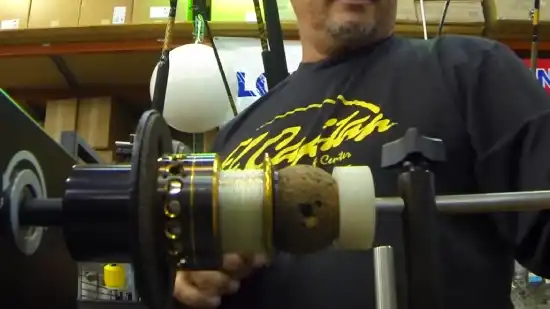
In terms of changing your SpiderWire fishing line, the recommended frequency typically falls within the range of every 6 months to 1 year. However, this timeline can vary depending on several factors, including how frequently you fish, the conditions you fish in, and the amount of lines on your reel.
Keep an eye out for signs of wear and coiling. If you notice these issues, it’s a clear indicator that it’s time to replace your SpiderWire line.
What kind of fishing line is PowerPro?
PowerPro is a low-stretch braided fishing line that’s known for its exceptional all-around performance. As a trusted member of the PowerPro family of products, it has established itself as a reliable workhorse for anglers in a variety of fishing situations.
With its low stretch characteristics, PowerPro offers sensitivity and strength, making it a popular choice for anglers who need a dependable line that can handle various fishing challenges.
What material is used to make both Power Pro and Spiderwire fishing lines?
Both Power Pro and Spiderwire fishing lines are made with high-strength synthetic fibers, specifically Spectra fibers, which provide exceptional strength and low-stretch properties.
Spectra fibers are a type of polyethylene material that’s known for its incredible tensile strength. These fibers are incredibly durable and can withstand the rigors of fishing in various conditions.
The use of Spectra fibers in both Power Pro and Spiderwire lines ensures that they have a high abrasion resistance, making them less likely to break or fray when in contact with rocks, debris, or fish with sharp teeth.
Additionally, Spectra fibers have a low stretch factor, meaning the lines are more sensitive and can transmit even the subtlest of bites.
Is using Power Pro and Spiderwire fishing lines suitable in freshwater and saltwater environments?
You can use these fishing lines in both freshwater and saltwater environments. Power Pro and Spiderwire fishing lines are specifically designed to withstand the challenges of both types of fishing. Their high-strength properties and durability make them suitable for a wide range of fishing conditions.
Whether you’re casting your line in a peaceful freshwater lake or battling the elements in the salt water, these lines will perform reliably. They’re built to resist the corrosive effects of saltwater, ensuring that they maintain their strength and performance over time.
Making Your Choice: Power Pro vs Spiderwire Fishing Lines
Both Power Pro and Spiderwire offer a range of fishing lines, each with its own set of advantages. Your choice between these two respected brands should align with your specific angling needs and preferences.
If you prioritize casting distance, Spiderwire has a slight edge, but Power Pro still offers impressive performance. When it comes to abrasion resistance and long-term durability, Power Pro shines.
Spiderwire has the upper hand in terms of an easier break-in period. Color options cater to various fishing conditions, and both brands are accessible within different price ranges.
Whether you’re a freshwater enthusiast or a saltwater aficionado, both Power Pro and Spiderwire fishing lines prove reliable in diverse environments.
Ultimately, the choice between these two fishing lines depends on your priorities and fishing style.

